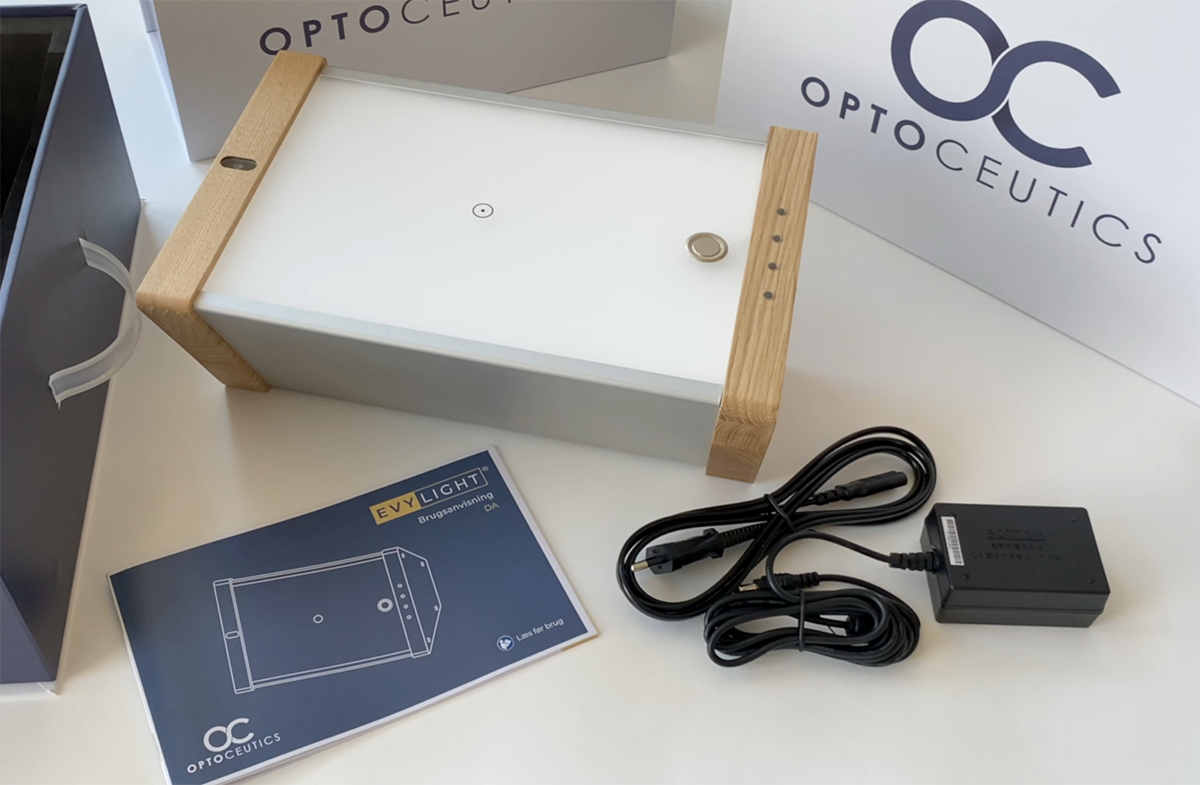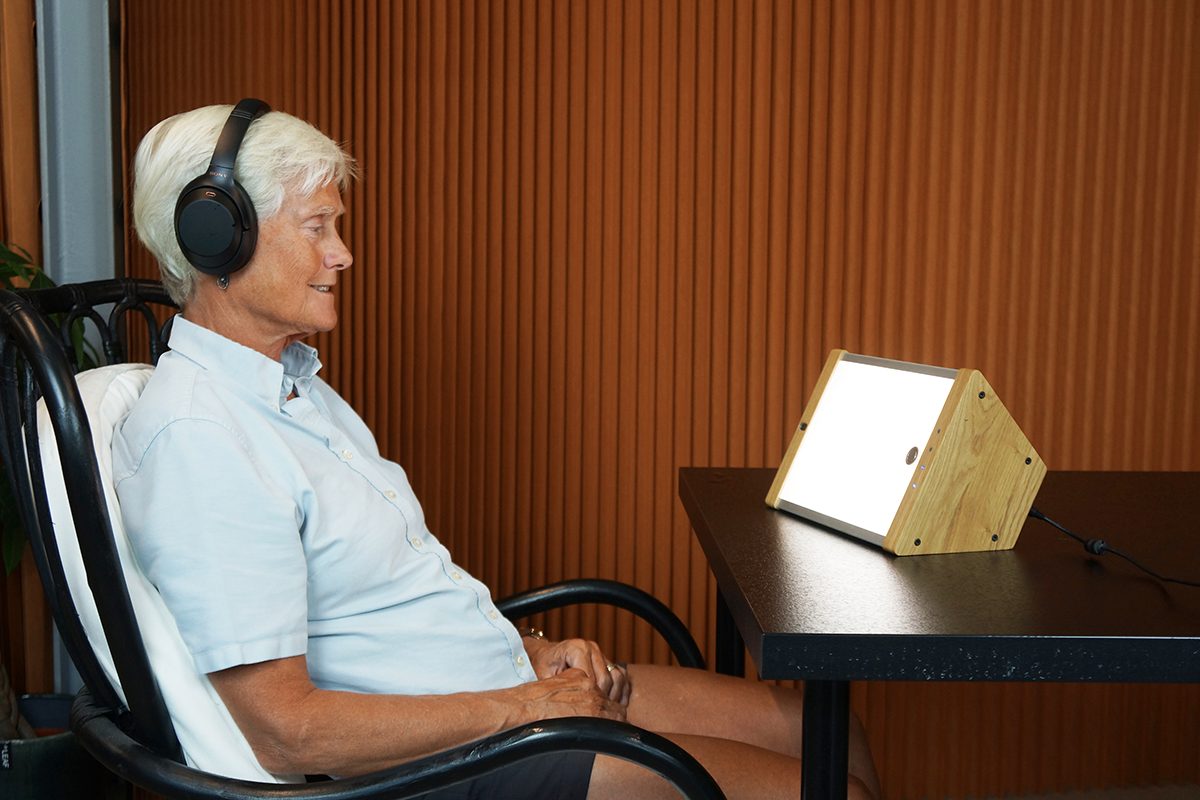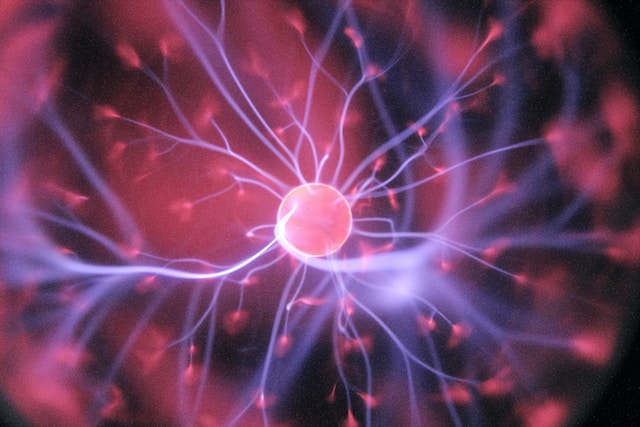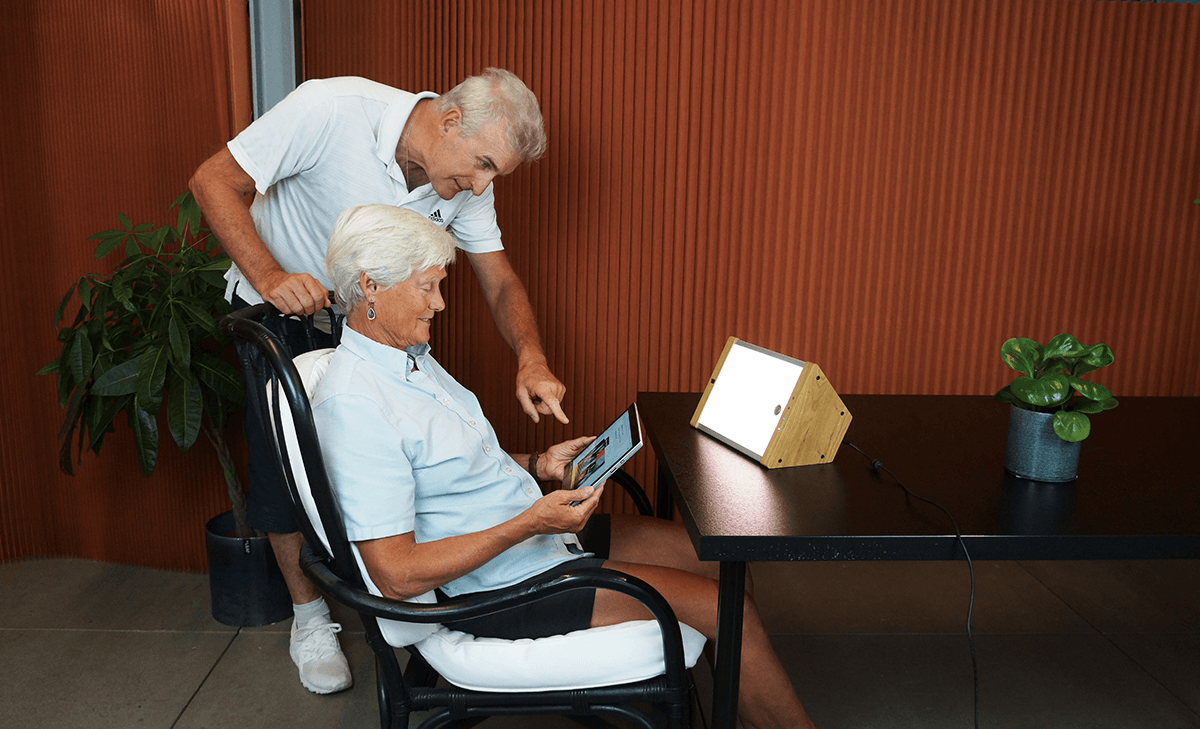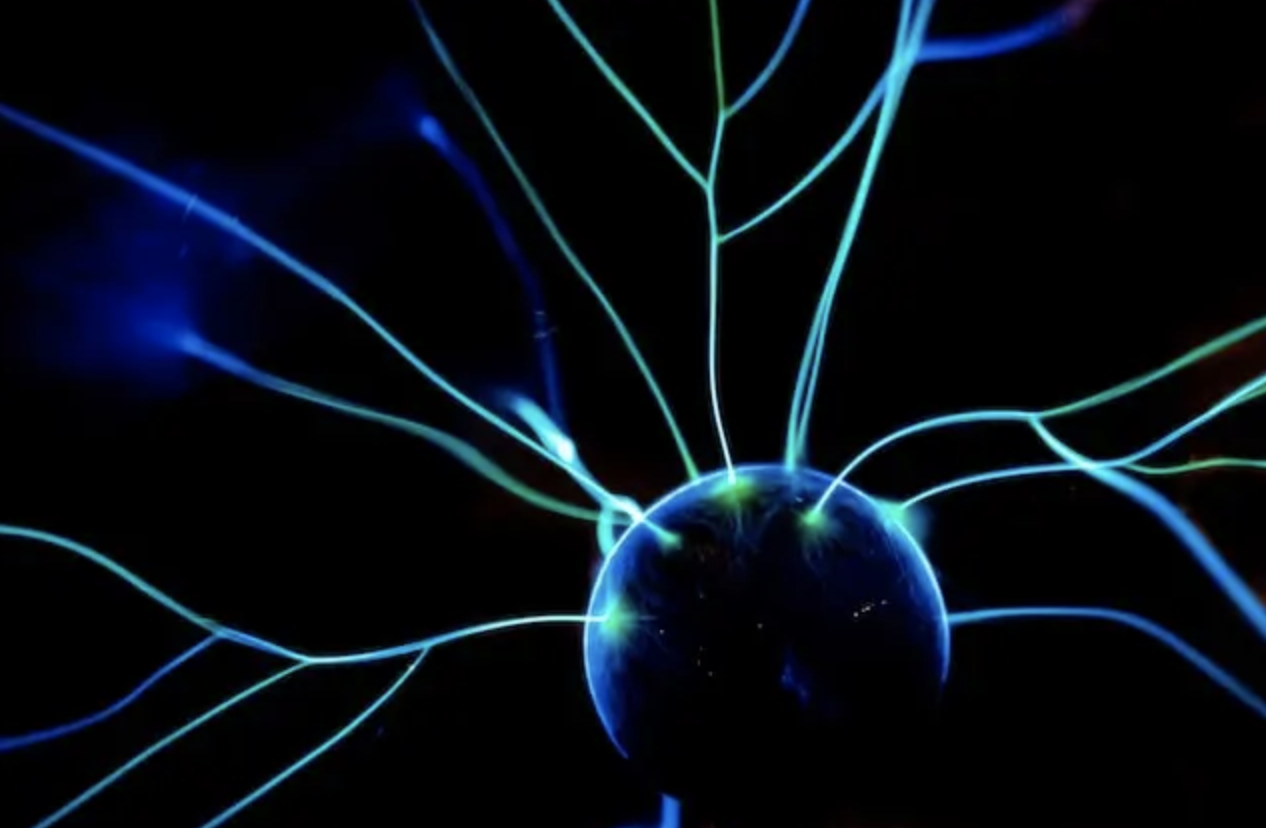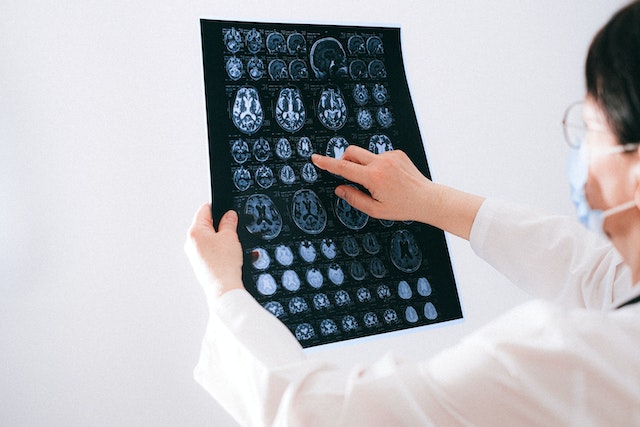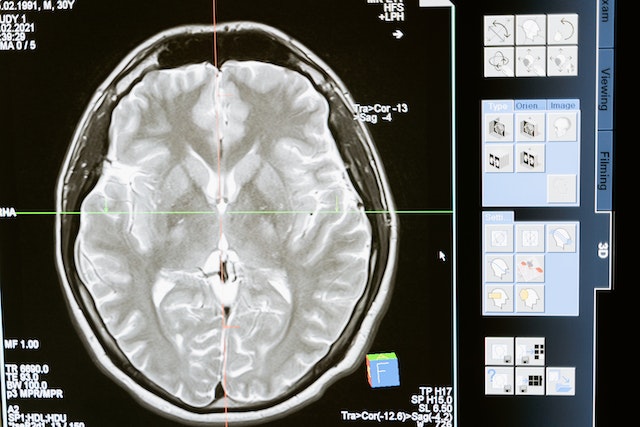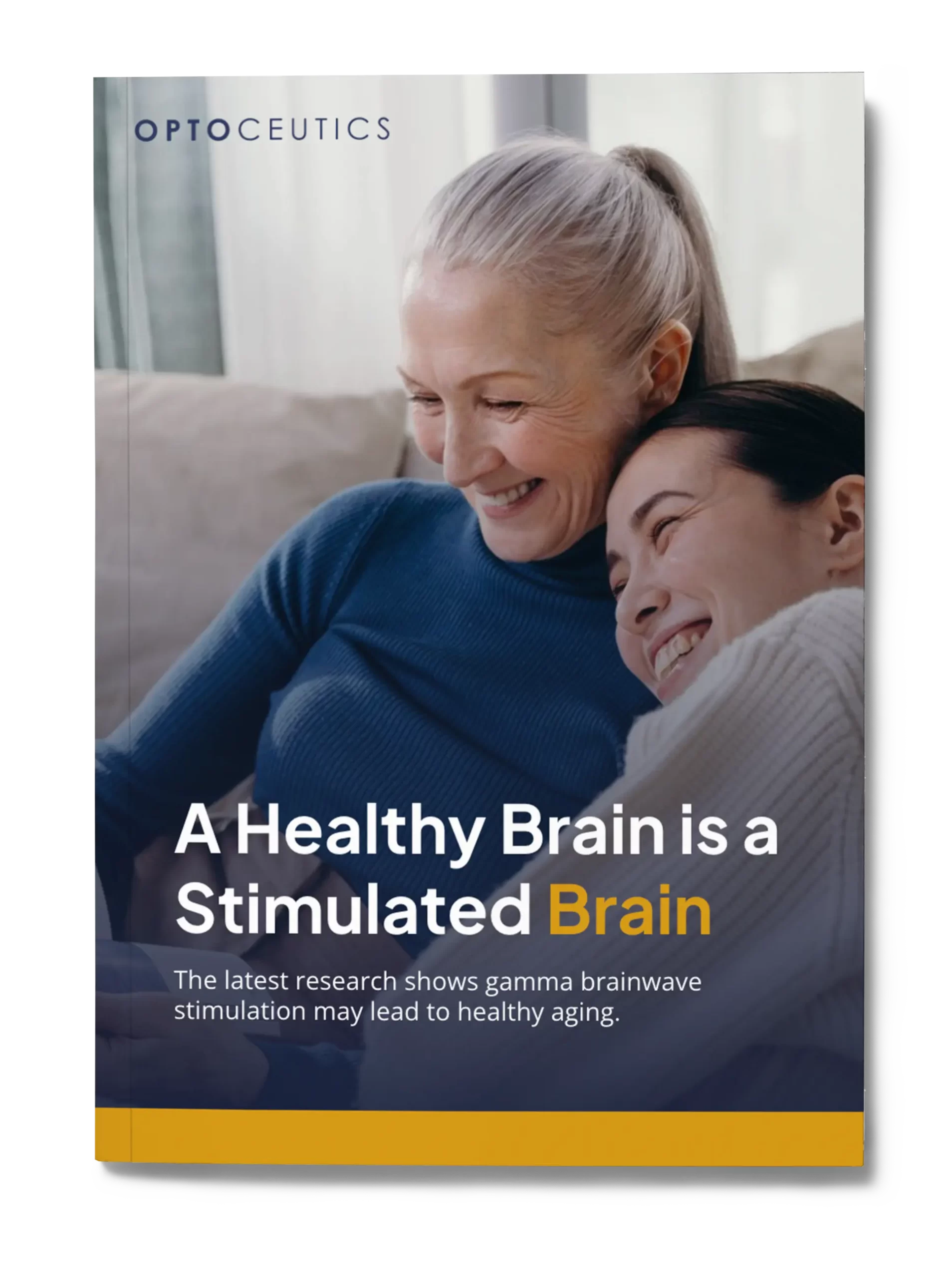Dementia is the progressive loss of cognitive function, such as thinking and reasoning, to the point where it interferes with a person’s day-to-day life. Certain medical issues, such as Alzheimer’s Disease, feature dementia as a core part of the condition. Several therapies and interventions have been shown to slow the progression of symptoms, with light therapy being one of the most recent and promising. So in this guide, we’re going to look at what light therapy treatment for dementia is, the benefits it offers, and more.

Christopher Ravn
Key Takeaways
1. Dementia is the progressive loss of our cognitive abilities and is associated with conditions such as Alzheimer’s Disease.
2. Although there isn’t a cure for dementia, light therapy treatments have been shown to provide a number of therapeutic benefits.
3. By utilizing the power of light therapy, studies have shown that sleep patterns, behavioral disruptions, and memory loss can all be improved in those with dementia.
4. Even though the research is quite new, products like EVY LIGHT look to make this form of treatment available for everyone by offering a product you can use at home.
Table of Contents
1. What Is Light Therapy For Dementia And What Are Its Benefits?
2. How Does The LED In The Light Help With Dementia?
3. How Does a Light Therapy Session Actually Work?
4. The Latest Research About Light Therapy for Dementia
5. How Does Light Therapy Impact Brain Function in Dementia?
6. What Type of Light is Best to Use With Light Therapy for Dementia?
7. What Is The Best Device To Use With Light Therapy For Dementia?
8. How Much Does Light Therapy For Dementia Cost?
9. Can Light Therapy Be Detrimental If You Have Dementia?
10. Frequently Asked Questions About Light Therapy For Dementia
What Is Light Therapy For Dementia And What Are Its Benefits?
Light therapy for dementia is a treatment option that utilizes different wavelengths of light to interact with certain parts of the brain. Although initially used as a treatment for ailments such as seasonal affective disorder, light therapy has recently been applied as a possible treatment for dementia – and it offers some promising results.
So, does light therapy help dementia? Although the research is relatively new, light therapy treatment could hold a number of benefits for those suffering from dementia. These possible benefits of light therapy and dementia include:
- Cognitive improvements such as improved sleep pattern regulation, better memory retention and heightened reasoning.
- Improved moods in those suffering from dementia, including symptoms associated with depression and anxiety.
- Behavioral benefits such as reduced agitation and improved mood.
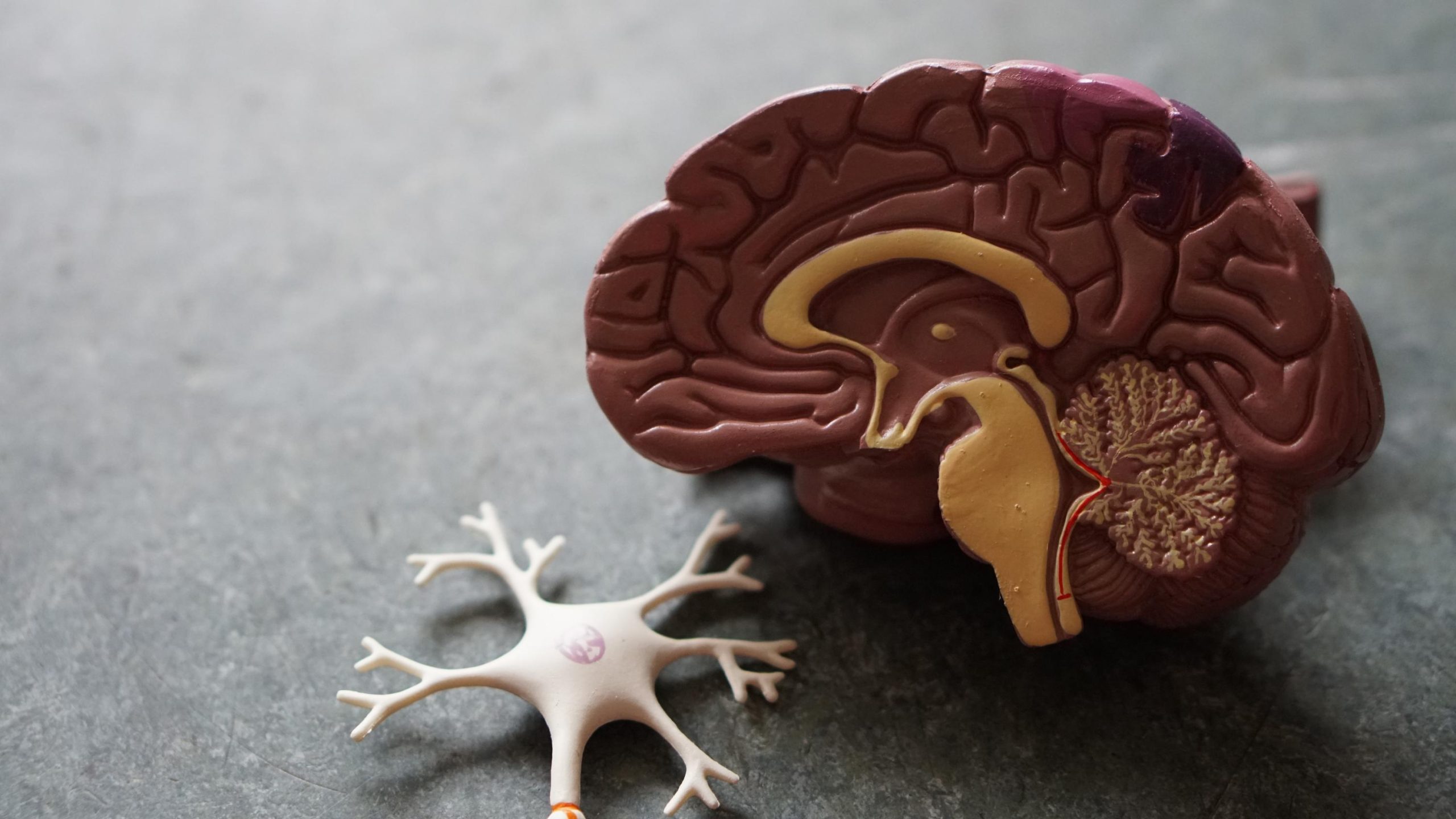
Can Light Therapy Help With Dementia?
There have been various clinical studies and trials that have looked into using light therapy treatment to help with dementia. Recently, clinical studies undertaken by The Picower Institute at the Massachusetts Institute of Technology (MIT) have shown significant promise when it comes to using light therapy to manage the symptoms of dementia. By focusing on a 40Hz pulse of light, participants with Alzheimer’s Disease and dementia noted improvements in brain connectivity and cognition. Although these studies are ongoing, there are a lot of positives to take from the emerging work.
Comparing Other Treatments To Light Therapy For Dementia
The main route of treatment for dementia involves using medication to help mitigate some of the associated symptoms, such as agitation or memory loss. Leqembi, Donepezil, rivastigmine and galantamine are all used – with varying efficacy – to help treat mild-to-moderate dementia in patients.
However, when comparing these treatments with light therapy, the biggest difference is the level of risk associated with treatment. The medications listed above all have side effects, but light therapy is a non-invasive and low-risk alternative.
How Does The LED In The Light Help With Dementia?
The light-emitting diode (LED) technology used in light therapy treatment is key to its effectiveness. It has several key benefits that make it the preferable form of light source in this type of therapy, including:
- Wavelengths: LED lights can be adjusted to emit specific wavelengths, which is how it can be used to target gamma waves in the brain.
- Energy Efficiency: LED lights consume less power and don’t generate heat in the same way as traditional light bulbs. This makes them a safe and cost-effective option.
- Durability: LED lights have a much longer lifespan when compared to other bulbs, making them ideal for therapeutic use.
There have been several studies that investigate how LED light therapy can help with dementia. Although we have mentioned the MIT studies before, other studies have looked into how light therapy interacts with circadian rhythms in people with dementia. These studies have pointed to reduced agitation, improved mood and stabilized circadian rhythms in participants who have undergone light therapy treatment.
How Does The Color Of The Light Affect Dementia?
Several different light colors have been looked at as viable treatments for dementia as they offer different benefits. Blue light, for example, is a short wavelength color that has been shown to be particularly useful in affecting circadian rhythms in dementia patients. It mimics sunrise, which our bodies correspond with a waking period. By using blue light therapy, those with dementia may realize improved sleep patterns.
ISF-Patented Technology: Unlike many other 40 Hz devices, OptoCeutics employs proprietary Invisible Spectral Flicker (ISF) technology, which alternates between two types of white colors so close in tone that when they flicker, you can barely see it, providing a smoother, more tolerable experience with brain stimulation.
Red light therapy, on the other hand, looks to improve the cognitive abilities of patients with dementia. Red light is able to penetrate deeper into tissues, offering enhanced elasticity in the brain as well as other forms of neuroprotection.
Near-Infrared Light And Dementia Disease
Near-infrared light therapy, also known simply as red light therapy, has been shown to provide cognitive improvements in those with dementia. It works by penetrating the skull and stimulating the neurons and blood flow in the brain. It works in a few different areas of the brain, including:
- Mitochondria: This type of therapy is believed to enhance the efficiency of mitochondria in the brain, which act as energy cells. By boosting the mitochondria in the brain, red light therapy could enhance neural function and cell survival.
- Increased Blood Flow: Red light therapy appears to promote vasodilation in capillaries in the brain, which allows for greater blood flow to the brain. This can help with nutrient and oxygen delivery to brain cells.
- Neurogenesis: There is emerging evidence that red light therapy can encourage the growth of new neurons and connections in the brain, which could slow the progression of dementia.
Small Studies And Their Findings
Light therapy for dementia has been gaining traction thanks to a number of studies and clinical trials. The work of researchers at MIT has demonstrated that light therapy can help prevent neuron death, create lower levels of amyloid proteins in the brain and preserve synapses. This has pronounced benefits for people with dementia, including improved memory retention and sustained learning.
One of the more important aspects of this research is the safety of using this type of treatment in patients with dementia. There were no reported serious side effects following treatment while also enhancing brain activity. This means that light therapy could be a viable treatment to use on its own or paired with other treatments without adding to patient risk.
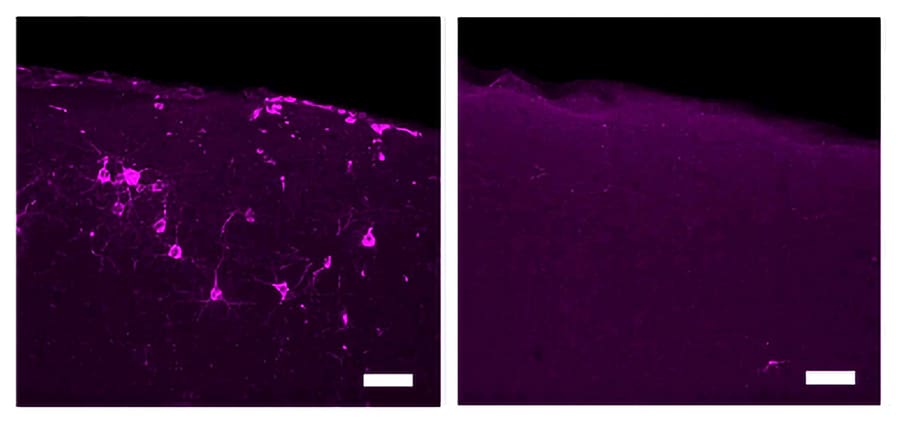
Light Therapy Mechanisms And Cellular Effects
Although the research is still relatively new, it points to several cellular effects that promote biochemical changes in brain cells. These cellular effects include:
- Stimulation of Gamma Brain Waves: The therapy aims to entrain the brain’s gamma waves, which operate at frequencies around 40 Hz. These waves are associated with higher cognitive functions, attention, and memory. In patients with dementia, gamma wave activity is often disrupted. The therapy seeks to restore normal gamma wave activity, potentially improving cognitive and non-cognitive functions.
- Mitochondrial Activation: Red light therapy has been shown to penetrate beyond the skin to reach mitochondria. When this happens, the mitochondrial cells begin to produce more energy which can improve cell functionality.
- Reactive Oxygen Species (ROS) Modulation: Light therapy provides a moderate increase in ROS, which can help switch on signals in cells to promote their growth, maintenance and overall survival.
- Neuroprotection: Light therapy looks to provide an environment that promotes neuron growth and protection. This is particularly important for dementia, as it progresses with neuron loss and dysfunction.
Many of the studies released around light therapy and dementia look to understand how it can help combat symptoms at a cellular level. These potential mechanisms of action include:
- Improved brain metabolism.
- Increased brain blood flow and oxygenation.
- Reduced amyloid plaques.
- Regulated neurotransmitter levels.
- Better stress response modulation.
How Does a Light Therapy Session Actually Work?
One of the biggest appeals of light therapy is that it’s non-invasive and doesn’t rely on medication. There are two primary routes to receiving light therapy treatment – either in a clinical environment such as participation in a clinical trial or by using at-home devices. At-home devices offer a cost-effective option that can be easily integrated into the lifestyle of someone dealing with dementia. So, to help you learn how to use light therapy for dementia, let’s go over what a therapy session consists of:
- Positioning the Lamp: Light therapy lights require a flat surface to rest on, but once it’s set up you can sit down from 2 feet away and let the light do its work.
- Don’t Stare at the Light: It’s important not to directly stare at the light when it’s on – just let it cast the light over you.
- Use it Daily: The best way to use a light therapy device for dementia is to use it consistently. Once a day should be enough for it to work.
- No Need to Interact: Once the light is on, all you have to do is sit back and relax. You can chat with a friend, watch television, or simply rest while the therapy session progresses.
This form of light therapy treatment is really simple to set up and use. What’s more, you have absolute freedom about where you can use it. Whether that’s in bed, on your couch, or somewhere else, you can choose a location that’s comfortable for you. You can fit it into your daily schedule without having to go to a hospital for treatment, making it much easier to stay on top of.
What Is The Best Device To Use With Light Therapy For Dementia?
The best light therapy device to use for dementia is one that has been thoroughly trialed and tested. Optoceutics’ EVY LIGHT® is a good example of this, offering a usable device that can fit into your home without issue and is easy to set up. What’s more, it uses the right frequency of light to give you the benefits associated with clinical studies and trials for light therapy and dementia.
The Latest Research About Light Therapy for Dementia
The body of research around light therapy as a viable treatment for dementia is continuing to grow. The most significant findings have stemmed from the work of MIT researchers in 2022, although this clinical study was cut short due to the COVID-19 pandemic. The team hopes to pick this work back up shortly, with a focus on performing more clinical trials that focus on Alzheimer’s Disease, Parkinson’s Disease, and Down Syndrome.
There are plenty of other studies underway that focus on light therapy as a form of dementia treatment. The National Institute for Health has recently commissioned a long-term trial that will be focused on light therapy as an alternative form of treatment for dementia.
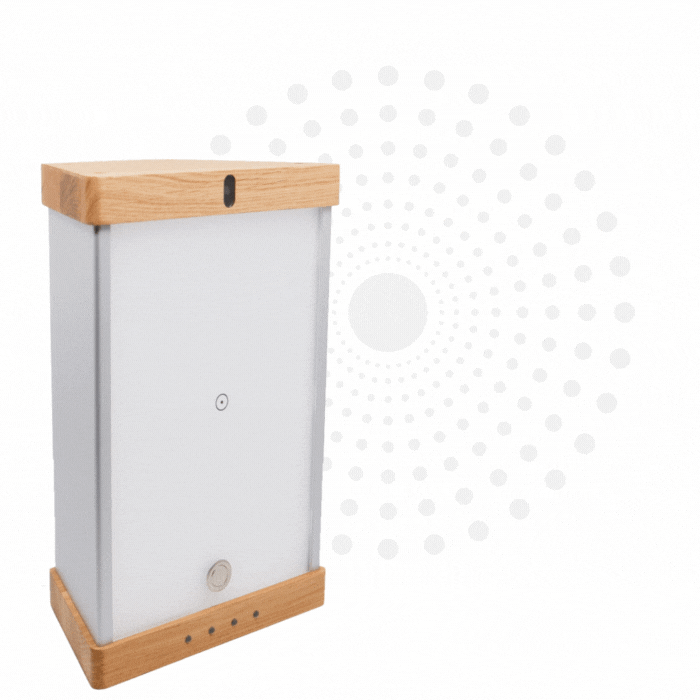
Enhance your brain performance through the power of light.
Comfortable and easy to use 40Hz light therapy to support and improve your brain function.
View Our LightHow Does Light Therapy Impact Brain Function in Dementia?
Although the research into light therapy and dementia is relatively new and ongoing, it holds a great deal of promise. So far, studies have outlined that when using light therapy for dementia, patients can enhance several cognitive functions, including:
- Memory Retention: Both memory retention and attention span of participants with dementia improved under light therapy treatment.
- Low Amyloid Plaque: Amyloid plaques are indicators of dementia progression, so if the brain has lots of amyloid plaque then progression is severe. Light therapy has been shown to potentially reduce the number of amyloid plaques present in the brain, essentially slowing down the progress of dementia.
- Neuroprotection: Light therapy has also been shown to potentially help with neuroprotection and neurogenesis, which can help promote neural functionality in dementia patients.
- Circadian Rhythms: People with dementia tend to have disrupted circadian rhythms which affect sleep patterns. Light therapy can help regulate circadian rhythms and promote a better quality of sleep.
- Mood Stabilization: Another area where dementia patients struggle is mood disturbances, which can be exacerbated by sleep disruption. Light therapy could help improve the mood of those with dementia, lowering the risk of depression and anxiety.
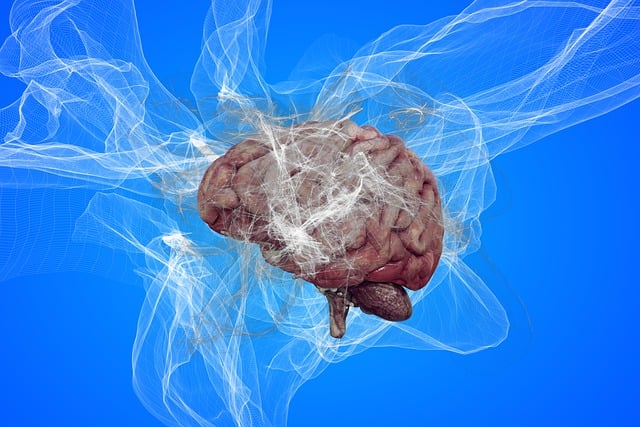
Effect Of Light Therapy On Disturbed Behaviors
Dementia, particularly as it progresses, causes significant behavioral changes in patients that include things like depression or general agitation. Light therapy could help alleviate many of these disturbed behaviors, such as:
- Aggression and agitation.
- Mood swings and imbalances.
- Memory loss and cognitive decline.
By addressing these disturbed behaviors, patient outcomes are much more positive and it makes caring for these individuals much easier. The research from MIT in particular noted that by strengthening brain connectivity through light therapy, many of these behaviors can be drastically reduced.
The Circadian System In Dementia Disease
The circadian system is intricately linked to dementia as this ailment disrupts it. This change in circadian rhythm can impact the sleep patterns of dementia patients, which can lead to (or exacerbate) the behavioral disruptions associated with dementia. By using light therapy, dementia patients can essentially reset their circadian rhythm so that it realigns with their natural resting state.
As many of the symptoms associated with dementia work with each other, by dealing with one issue you often improve other aspects of the condition. So, by correcting issues with the circadian system, dementia patients may also experience mood improvements and an overall improvement in quality of life.
What Type of Light is Best to Use With Light Therapy for Dementia?
Most of the studies around using light treatment for dementia have focused on using a specific light frequency, set to 40Hz. There are different types of light used in light therapy though, all with their own set of applications. These include:
- Bright Light Therapy: This form of light therapy uses a light spectrum that mimics natural sunlight. It aims to correct the circadian rhythm of dementia sufferers, which in turn improves sleep patterns and mitigates behavior disruptions.
- Blue Light Therapy: Blue light therapy works in a similar manner to bright light therapy and attempts to improve the sleep and mood patterns of those with dementia.
- Red Light Therapy: Red light therapy, also known as photobiomodulation, uses near-infrared light to penetrate tissue more effectively. As a result of this, it looks to enhance cognition in people with dementia by promoting neuroprotection, neurogenesis and plasticity in the brain.
- 40Hz Light Therapy: 40Hz light therapy uses a flickering light set to a frequency of 40 pulses per second. This helps to stimulate gamma brain waves, which activates neurons and lowers the number of amyloid plaques in the brain.
We Believe Prioritizing Brain Health Enhances Your Quality Of Life
Get to know our team, our mission and how our EVY LIGHT® can provide you and your loved ones with a fuller life, letting you breathe a little easier.
What Is The Best Device To Use With Light Therapy For Dementia?
The most important aspect of selecting a device to use with light therapy for dementia is to choose a product with the right light frequency. Most of the research has focused on using the 40Hz light frequency to interact with gamma waves in the brain.
The other big consideration is whether to use stroboscopic light devices or not. As this device uses strobe patterns, it can cause many people to feel dizzy, nauseous or give them a headache. In some cases, it can even cause epileptic seizures. So instead of stroboscopic light, you might want to consider Optoceutics Invisible Spectral Flicker technology. This is much more tolerable to use and doesn’t cause negative side effects like those mentioned above.
How Much Does Light Therapy For Dementia Cost?
Light therapy treatment for dementia will vary in price depending on the type of device used for the treatment and where the treatment is undertaken. Opting for light therapy treatment in a clinical setting such as a hospital could prove to be quite expensive, particularly if your insurer won’t cover the costs.
Alternatively, opting for an at-home light therapy device will help keep the costs associated with light therapy as low as possible. The only costs associated with this form of therapy will be the cost of purchasing the light and the cost of running it, which is negligible. So, if you’re looking to try out this form of therapy then an at-home device is the most cost-effective solution.
View The Video Testimonials Of What Others Have Experienced
See how others have achieved a sharper mind by activating their gamma brainwaves in combination with maintaining a healthy lifestyle.
Can Light Therapy Be Detrimental If You Have Dementia?
Most of the research surrounding light therapy for dementia points to it being incredibly safe and devoid of any significant side effects depending on the type of light you use. Stroboscopic light can cause dizziness, headaches and even seizures. In contrast to this, using Invisible Spectral Flicker technology mitigates all of these issues by using a light pulse that is indiscernible to the naked eye.
There are also certain individuals who may experience detrimental effects from light therapy. So, if you have any of the following conditions, it is wise to speak with a medical professional before undergoing light therapy treatment:
- Conditions affecting your eyes, such as retinal disease.
- Various types of skin sensitivity, such as dermatitis.
- Behavioral disorders such as bipolar disorder.
- Sensitivity to light or prone to migraines.
Frequently Asked Questions About Light Therapy For Dementia
What Is The Best Light Therapy For Dementia?
40Hz light therapy has been shown to be an effective form of treatment for dementia and its symptoms. It uses a 40Hz frequency to facilitate gamma brainwave entrainment, which appears to diminish many of the cognitive and non-cognitive symptoms of dementia.
How Light May Help People With Dementia Disease
Light therapy has been shown to help promote neurogenesis, neuroprotection and gamma brainwave entrainment in individuals dealing with dementia. It can also help with sleep pattern problems, mood disturbances and has even been shown to slow the onset of dementia and its accompanying symptoms.


